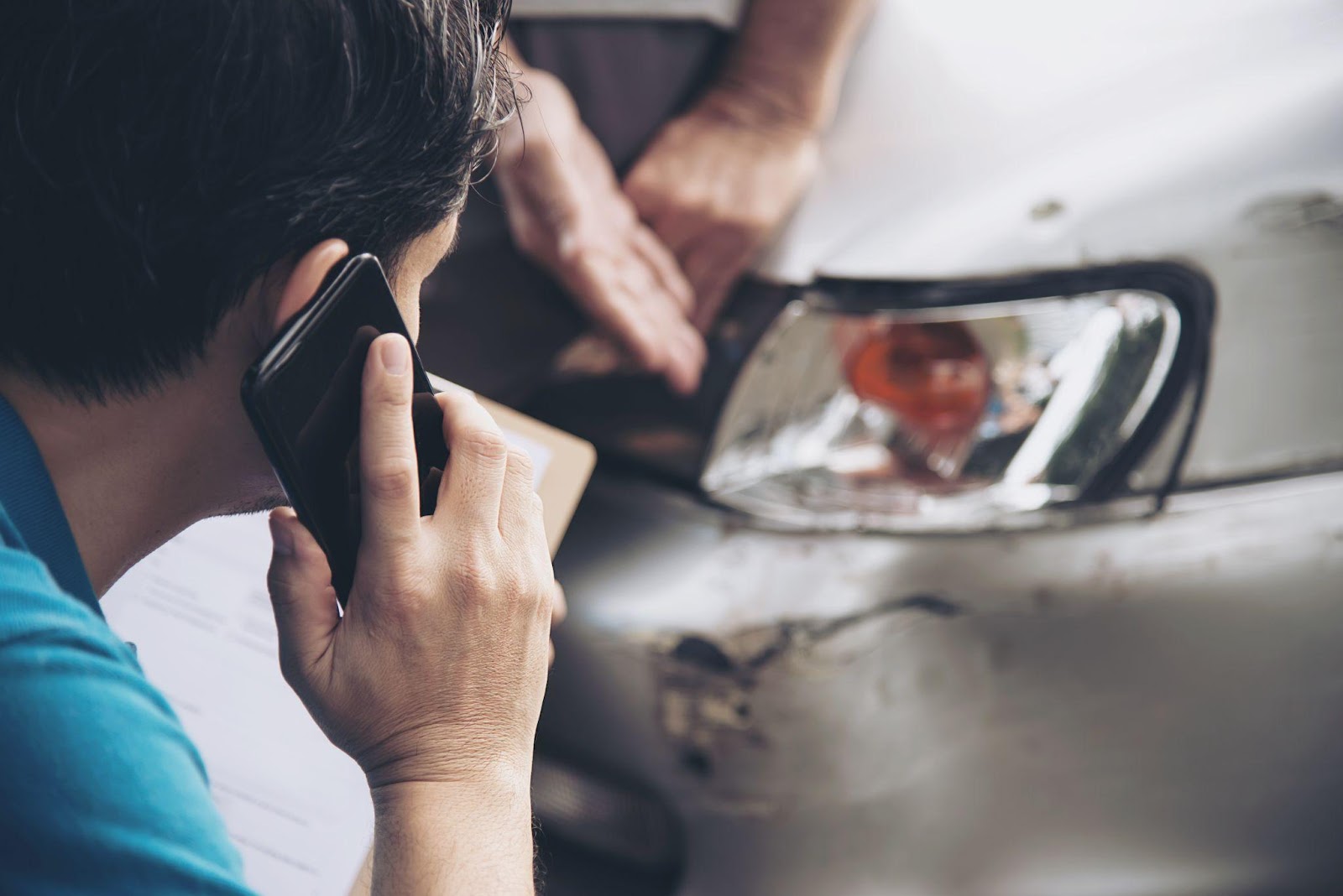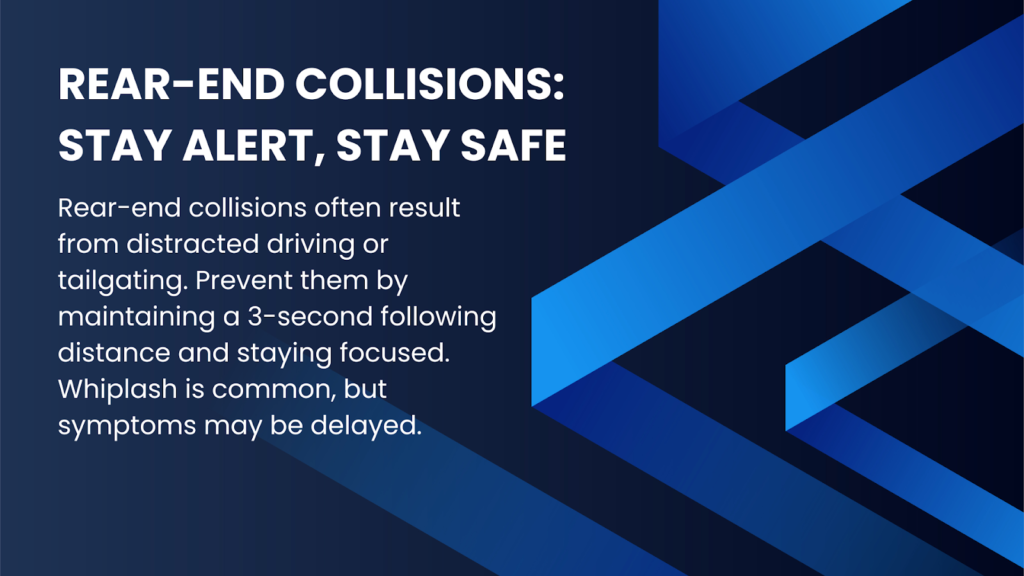
In 2020, despite reduced traffic due to the pandemic, Alabama still saw 134,039 traffic crashes. This startling statistic from the Alabama Department of Transportation underscores the persistent risk of car accidents in our state.
Whether you’re navigating the bustling streets of Birmingham or cruising along rural highways, understanding the various types of car accidents can help you stay vigilant and prepared.
Introduction to Car Accidents in Alabama
Alabama’s roads present unique challenges, from dense urban traffic to winding rural routes.
Each year, thousands of Alabamians find themselves involved in car accidents, ranging from minor fender-benders to catastrophic collisions.
By familiarizing yourself with the common types of car accidents, you can better understand the risks you face on the road and the steps to take if you’re involved in a crash.
Rear-End Collisions
Rear-end collisions, which occur when one vehicle strikes the back of another, are among the most frequent types of car accidents in Alabama and across the United States.
Common Causes of Rear-End Collisions
- Distracted driving (e.g., texting, eating);
- Tailgating;
- Sudden stops; and
- Poor weather conditions affecting visibility or road traction.
Prevention and Safety Tips
- Maintain a safe following distance (use the 3-second rule);
- Stay alert and avoid distractions; and
- Keep your brake lights in good working condition.
Rear-end collisions can result in serious injuries, particularly whiplash and other neck injuries. If you’ve been involved in a rear-end collision, seek medical attention even if you feel fine initially, as some injuries may not manifest symptoms immediately.

Side-Impact Collisions (T-Bone Accidents)
Side-impact collisions, often called T-bone accidents, occur when the front of one vehicle strikes the side of another.
These accidents are particularly dangerous due to the reduced protection on the sides of vehicles.
Common Scenarios Leading to T-Bone Accidents
- Running red lights or stop signs;
- Failure to yield right-of-way; and
- Misjudging gaps in traffic when turning.
Safety Measures to Reduce Risk
- Always look both ways before entering intersections;
- Be cautious when making left turns across traffic; and
- Consider a vehicle with strong side-impact protection when car shopping.
Side-impact collisions can result in severe injuries, especially to passengers on the impacted side. Alabama law requires all motorists to carry liability insurance, which can be crucial in covering medical expenses and property damage in these scenarios.
Head-On Collisions
While less common than other types of accidents, head-on collisions are often the most devastating.
These occur when two vehicles traveling in opposite directions collide front-to-front.
Factors Contributing to Head-On Collisions
- Driving under the influence of alcohol or drugs;
- Drowsy driving, especially on long stretches of highway;
- Improper passing on two-lane roads; and
- Wrong-way driving on highways or one-way streets.
Preventive Strategies
- Never drive impaired or overly fatigued;
- Use extra caution when passing on two-lane roads; and
- Pay attention to road signs, especially in unfamiliar areas.
Head-on collisions often result in severe injuries or fatalities due to the combined force of both vehicles.
If you’ve been involved in a head-on collision, it’s crucial to seek immediate medical attention and consult with a legal professional to understand your rights and options.
Single-Vehicle Accidents
Not all car accidents involve multiple vehicles. Single-vehicle accidents occur when a car crashes into a fixed object or runs off the road.
Common Types of Single-Vehicle Accidents
- Run-off-road accidents;
- Collisions with trees, poles, or barriers; and
- Rollovers.
Causes and Prevention
- Distracted driving;
- Speeding, especially on curves;
- Poor road conditions or weather; and
- Vehicle malfunctions.
To prevent single-vehicle accidents, always drive at a safe speed for conditions, avoid distractions, and ensure your vehicle is well-maintained.
In Alabama, the scenic routes and rural roads can be particularly hazardous if drivers are not attentive to changing road conditions.
Multi-Vehicle Pile-Ups
Multi-vehicle accidents, or pile-ups, involve three or more vehicles and often occur on highways or in poor weather conditions.
Factors Leading to Multi-Vehicle Accidents
- Chain reactions from an initial collision;
- Sudden changes in traffic flow;
- Poor visibility due to weather or road design; and
- Following too closely in heavy traffic.
Safety Tips for Avoiding and Surviving Pile-Ups
- Maintain a safe following distance;
- Stay alert to traffic conditions far ahead;
- Have an escape route planned in heavy traffic; and
- If involved, stay in your vehicle with seatbelt fastened if safe to do so.
Multi-vehicle accidents can be particularly complex from a legal standpoint, as determining fault may involve multiple parties.
If you’re involved in such an accident, documenting the scene and gathering witness information can be crucial for any subsequent insurance claims or legal proceedings.
Intersection Accidents
Intersections are hotspots for various types of car accidents due to the convergence of traffic from multiple directions.
Common Intersection Accident Scenarios
- Running red lights or stop signs;
- Turning left across oncoming traffic;
- Rear-end collisions at stoplights; and
- Pedestrian or cyclist collisions.
Intersection Safety Strategies
- Always approach intersections with caution, even with a green light;
- Look for pedestrians and cyclists before turning; and
- Don’t assume other drivers will obey traffic signals.
Alabama law requires drivers to exercise a high degree of care when navigating intersections. Understanding right-of-way rules and staying vigilant can significantly reduce the risk of an intersection accident.
Merging and Lane Change Accidents
Accidents during merging or lane changes are common on Alabama’s highways and multi-lane roads.
Causes of Merging and Lane Change Accidents
- Failure to check blind spots;
- Improper use of turn signals;
- Aggressive driving or road rage; and
- Misjudging the speed of other vehicles.
Tips for Safe Merging and Lane Changes
- Always use your turn signals;
- Check your mirrors and blind spots thoroughly;
- Avoid lingering in other drivers’ blind spots; and
- Be courteous and allow others to merge safely.
Remember, Alabama law requires drivers to signal their intention to change lanes or merge for at least 100 feet before doing so. Adhering to this practice can help prevent accidents and avoid potential traffic citations.
Weather-Related Accidents
Alabama’s diverse climate can create challenging driving conditions throughout the year.
Common Weather-Related Accident Scenarios
- Hydroplaning on wet roads;
- Skidding on icy patches;
- Poor visibility in heavy rain or fog; and
- Strong crosswinds affecting vehicle stability.
Weather-Specific Driving Tips
- Reduce speed in adverse weather conditions;
- Increase following distance;
- Ensure your vehicle is properly maintained for all weather conditions; and
- Use headlights in low-visibility situations.
Alabama law requires drivers to adjust their driving to the prevailing conditions. This means that even if you’re driving at or below the posted speed limit, you could be cited for driving too fast for conditions if you’re involved in a weather-related accident.
Distracted Driving Accidents
Distracted driving has become a significant concern in recent years, leading to numerous accidents across Alabama.
Common Distractions Leading to Accidents
- Texting or using a smartphone;
- Eating or drinking while driving;
- Adjusting in-car entertainment or navigation systems; and
- Engaging with passengers.
Alabama’s Distracted Driving Laws and Prevention
- It’s illegal to text while driving in Alabama;
- Hands-free devices are required for phone calls while driving;
- Consider using apps that block notifications while driving; and
- Pull over safely if you need to attend to distractions.
Distracted driving accidents can lead to serious legal consequences in Alabama, including fines and potential criminal charges in severe cases. Always prioritize your full attention on the road to keep yourself and others safe.
Frequently Asked Questions
Navigating the aftermath of a car accident can be overwhelming. Here are answers to some of the most common questions we receive about car accidents in Alabama.
How Long Do I Have to File a Car Accident Claim in Alabama?
In Alabama, the statute of limitations for personal injury claims, including those from car accidents, is generally two years from the date of the accident.
For property damage claims, you have up to six years. However, it’s advisable to start the process as soon as possible to ensure evidence is preserved and witnesses’ memories are fresh.
Will My Insurance Rates Go Up After an Accident in Alabama?
Insurance rate increases after an accident depend on various factors, including fault determination, your driving history, and your insurance company’s policies. If you’re not at fault, your rates may not increase.
However, even if you are at fault, many insurance companies offer accident forgiveness programs for first-time incidents.
What If the Other Driver in My Accident Is Uninsured?
Alabama requires all drivers to carry liability insurance, but unfortunately, not everyone complies. If you’re hit by an uninsured driver, you may need to rely on your own uninsured motorist coverage if you have it.
This underscores the importance of carrying comprehensive insurance coverage.
Can I Still Recover Damages If I Was Partially at Fault for the Accident?
Alabama follows a contributory negligence rule, which means if you’re found to be even 1% at fault for the accident, you may be barred from recovering damages. This strict rule makes it crucial to gather thorough evidence and potentially seek legal advice to protect your rights.
Take Action: Your Path to Recovery Starts Here
Have you or a loved one been involved in a car accident in Alabama? Don’t navigate the complex aftermath alone.
At Baxley Maniscalco, we understand the physical, emotional, and financial toll that car accidents can take. Our experienced team of personal injury attorneys is dedicated to fighting for your rights and ensuring you receive the compensation you deserve.
Don’t let confusion about your legal options add to your stress. Contact Baxley Maniscalco today for a free, no-obligation consultation.
Can't find what you're looking for? Search our site below.










